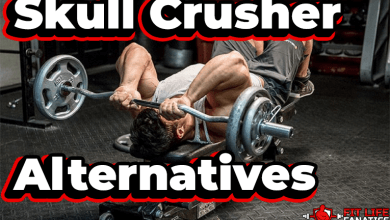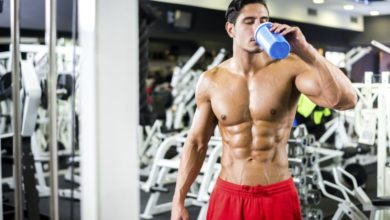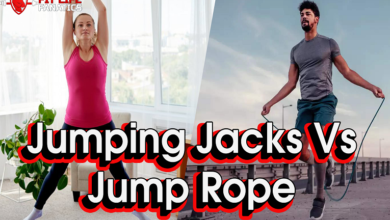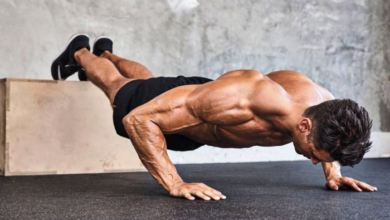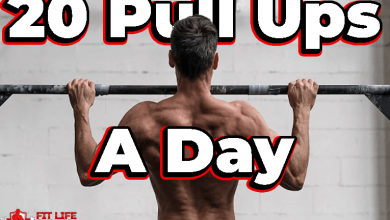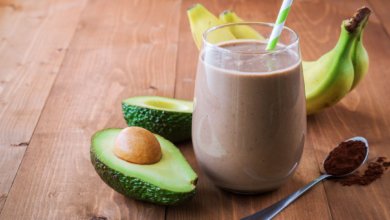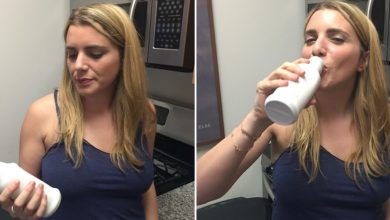Zercher Squat Vs Back Squat; The Low-down, Benefits, Muscles Worked
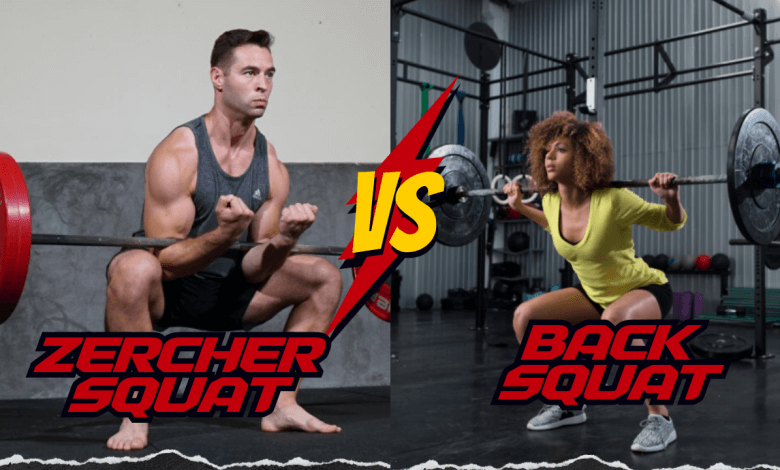
Zercher squats and back squats are among the coolest workouts we used to do back in the day.
Is it me or are many novice fitness buffs not too enthusiastic about these exercises?
Call me an old timer, but I know these two are some rare fitness gems that are becoming less popular by the day.
Could it be that most newbies just don’t know about them? Is it true that other new strength training programs, such as the Tactical Barbell Program and fitness challenges, are receiving more attention and importance?
Or have these workouts from the good ol’ days become obsolete?
You know what, I will ignore everything else and assume that most rookies are not giving these squats the attention they deserve because they don’t know about them.
In this post, I set out to share with you guys all there is to know about both of these squats.
Let’s jump straight in!
What are Zercher Squats?
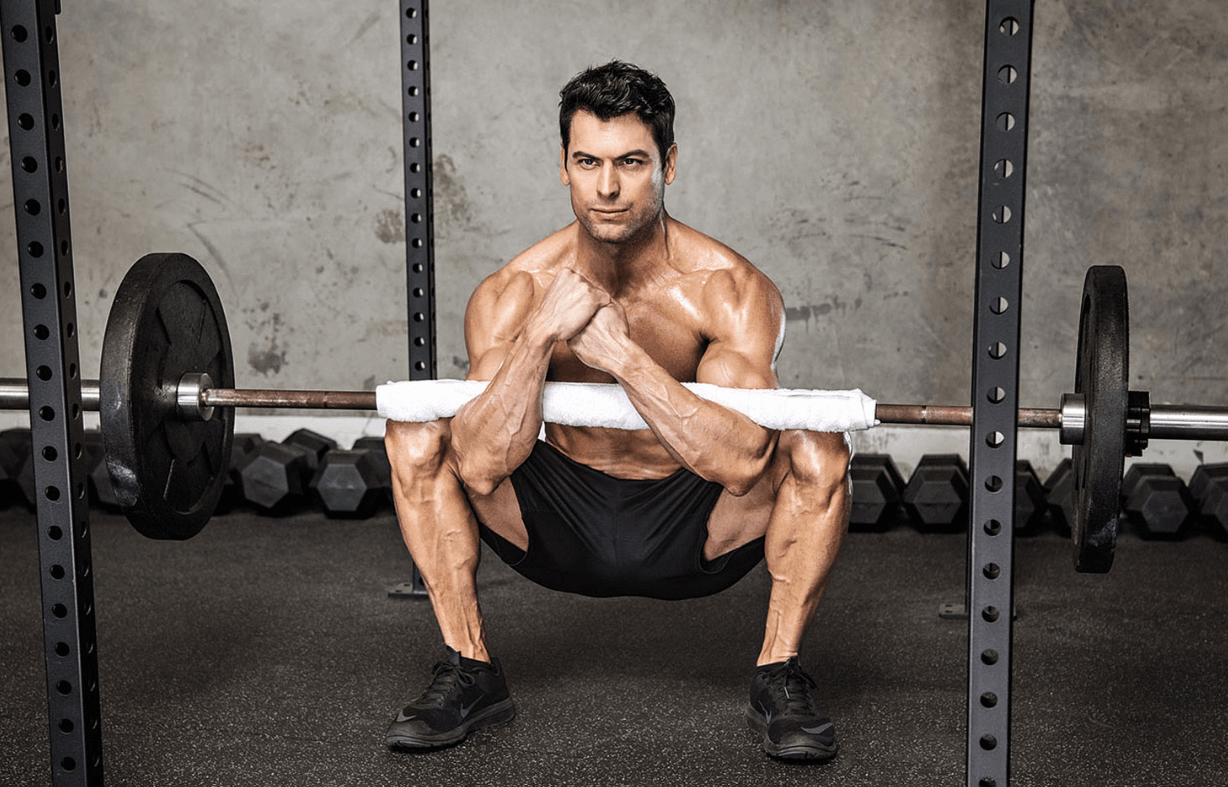
This squat variation is a fantastic front-loaded weightlifting workout that works the muscles in several parts of your body – including the core, upper back, and legs.
Zercher squats are performed with the use of a barbell (positioned in the crooks of the user’s elbows and the hands locked at the front.
This can make it quite difficult to pull off, but once you master how it’s done, you will love the results. I will get into the details of how to perform this workout in a moment.
Zercher Squat Origin
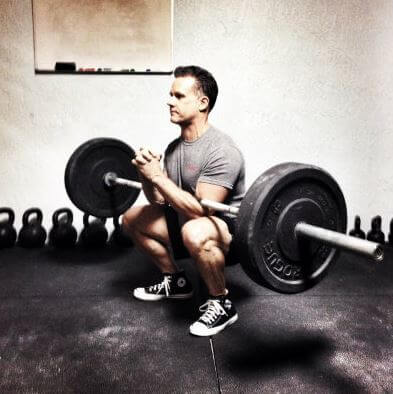
The Zercher squat is named after the guy who developed it - Ed Zecher. Apart from squat, there is also an exercise named after him - the Zercher deadlift. Zecher was a popular strongman and powerlifter in the early 20th century, in the 1930s and 1940s to be more precise.
Now that you know what the Zercher squat is, and its roots, let’s take a look at how to do it right.
How to Perform Zercher Squats
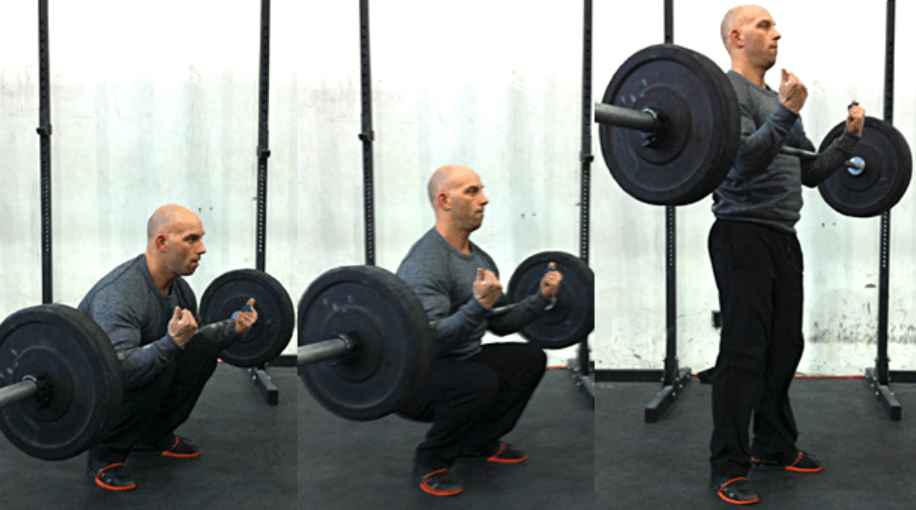
To nail this squat right, here are the steps you should follow;
Start by setting up the bar at the right height (depending on your height) on the squat rack – preferably at waist height. This allows enough room to take several steps back once you unrack the barbell.
Squat underneath the bar, facing it, and position it in the crook of your elbows – keep the elbows in line with your shoulders and the knuckles of your hands facing upward.
To engage the lats and upper back, rotate the shoulders outward. Now, unrack the barbell and step backward for a few steps.
At this point, you should have a tall posture with the feet a tad wider than hip-width, and the knees slightly bent forward. Maintain your shoulders directly above the hips to ensure a neutral position for your neck and head.
Tuck your chin (as though you’re holding an egg underneath) throughout the whole move, and plant your feet to the floor to distribute the weight evenly across the entire foot – gripping the floor for stability.
Now, engage your core while pre-tensioning your hips and shoulders.
With this alignment, bend your hips, knees as well as ankles to initiate the downward move till your legs run parallel (or slightly lower) to the floor.
Hold momentarily at the bottom of the move, and then dig in with your feet, pushing them into the ground to initiate the upward move – mainly pushing through your mid-foot and the heels with the toes engaged.
Hold your chest high and squeeze your glutes as you rise, letting your knees straighten and pushing your hips forward.
At the top of the move, squeeze your glutes and quads as you maintain a neutral spine position.
Your shoulders should be directly above your hips at the end of the move.
Repeat for the desired number of reps.
Here is how to perform Zercher squat:
Tips for Performing Zercher Squats

While the Zercher squat is a satisfactorily safe exercise, you can still ruin it all if you don’t get the form right, or you do something wrong. To stay safe and increase your gains, here are a few handy tips;
First things first, make sure to stick to a weight that you can safely control through several reps (sets even). Begin with single set training initially.
Maintaining your breath is just as crucial since the position of the bar can easily weigh on your chest and make breathing rather hard.
If that’s the case, consider making some tweaks (like reducing the weight) to ensure you can breathe and comfortably hold in the air during the move.
For complete newbies, an easier variation should help prepare your body, muscles, and joints for the challenges that this squat has to throw your way. Such variations as goblet squats or front squats with a dumbbell or kettlebell make for a fantastic start.
A long sleeve shirt or elbow sleeves will come in handy. Often, people performing the Zercher squat have experienced bruising or pain in the elbow area due to the weight of the bar pressing on the tendons in this area. A long sleeve shirt or elbow sleeves should help alleviate some of this pressure.
What are Back Squats?

The back squat is a similarly impressive squat variation that hits many muscle groups simultaneously, including your lower body and the core.
Whether you’re looking to build core strength or increase stamina and endurance of your body, this is the squat for you.
Why? You ask.
Well, it allows you to load quite a substantial amount of weight, enabling you to hit your muscles hard and heavy for strength and muscle growth.
How To Perform Back Squats
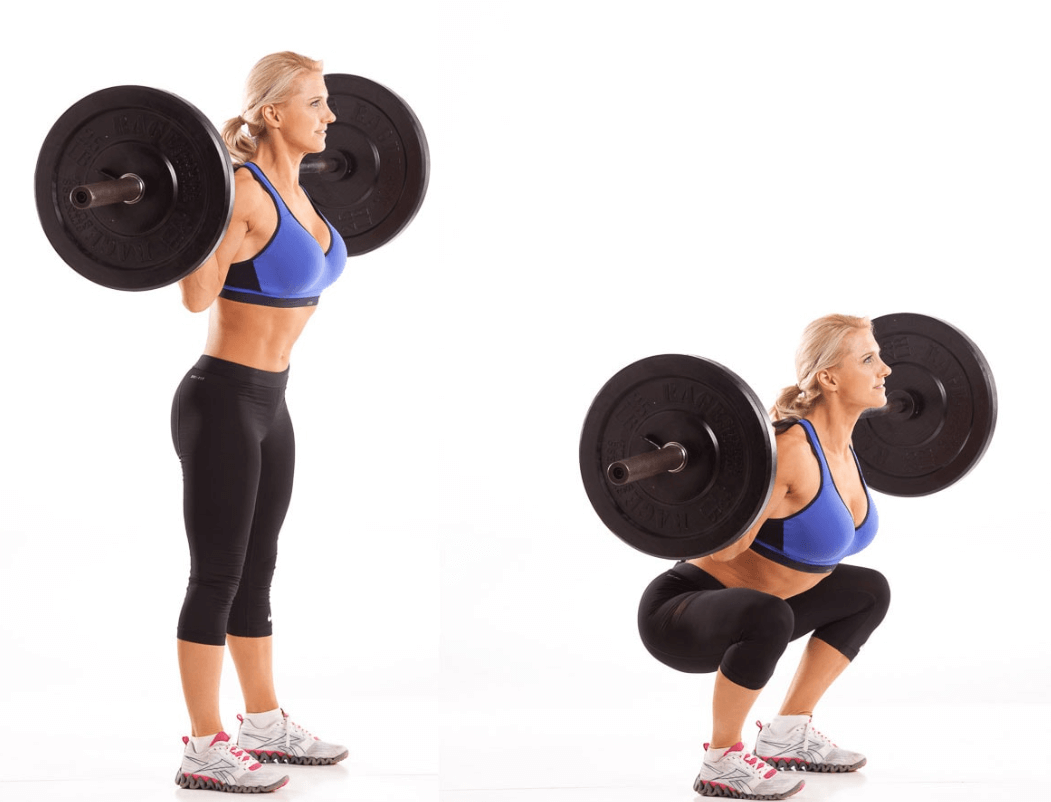
Start by unracking the bar from your rack and loading it on your neck, right behind your head so that it rests on your traps.
With your feet at shoulder-width apart, your chest held high, and your toes slightly pointing out, start to stand up.
Now, start to squat down on your hips by bending your knees while pushing your butt backward and down toward the floor. Maintain a forward gaze and push your knees slightly outward.
Once your thighs are parallel to the ground, hold for a moment before initiating the move to stand back up to the starting position.
Repeat for the desired number of reps.
Here is how to perform back squat:
Tips for performing the Back Squat

Pick the right weight for your fitness level. This will help avoid compromising your form during the workout, and worse yet, causing an injury.
Set the bar at the right height on the squat rack before picking it, not too high, not too low.
The grip you assume on the bar will vary depending on your preferred style, but whatever you do, ensure you have a firm but comfortable grip – preferably on the knurling (most quality bars have it).
Do not overarch your back/spine, keep it mostly flat – you don’t have to obsess much over it though. A handy tip is to breathe in before unracking the bar and holding in the air to keep your midsection solid.
Muscles Worked by Each Exercise
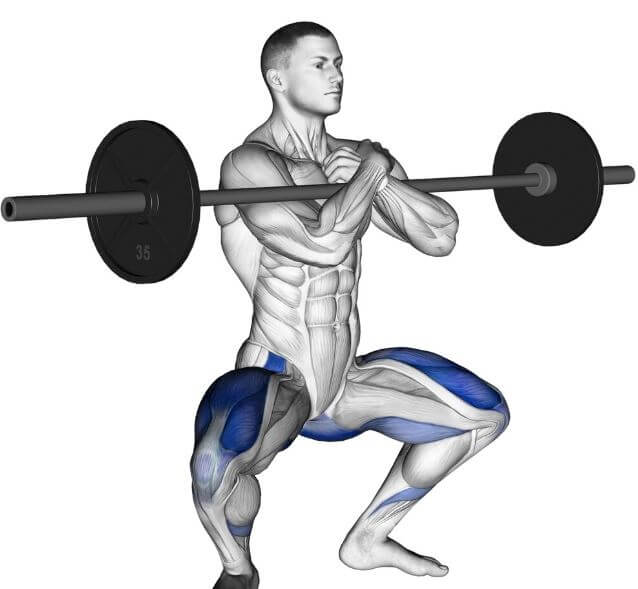

One thing about both of these exercises is that they work for almost similar muscle groups.
Zercher Squat – Muscles Worked
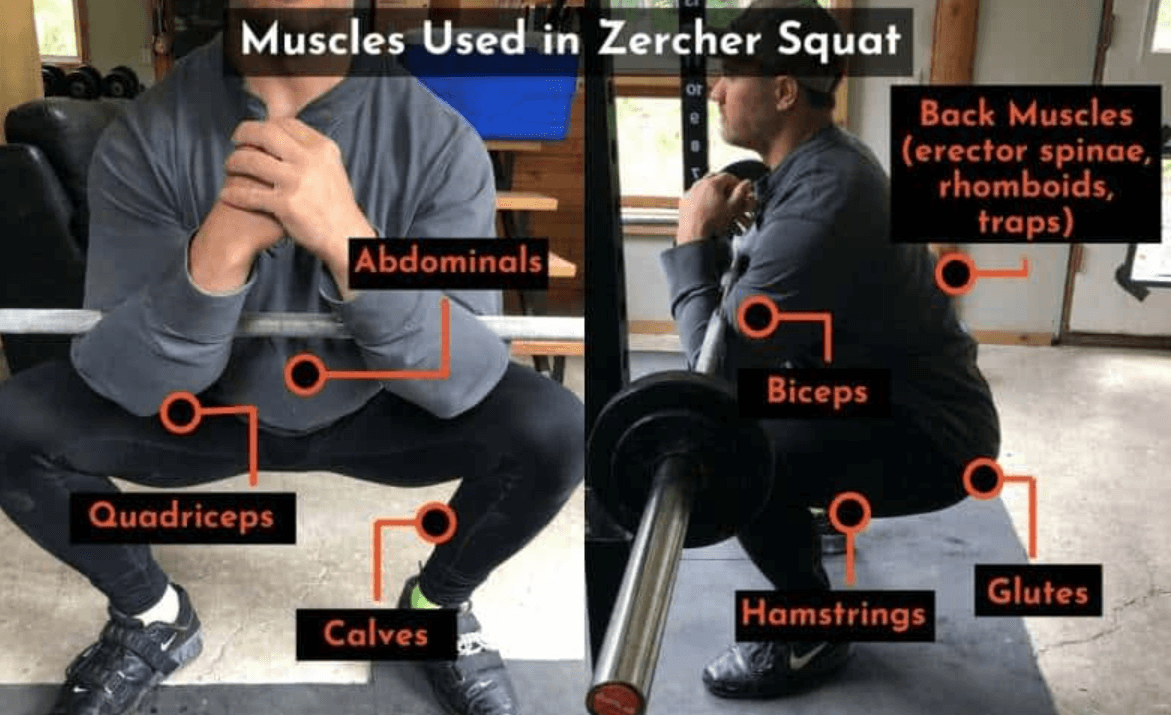
The Zercher squat targets the following muscles:
- Erectors
- Biceps
- Glutes
- Quadriceps
- Abdominals
- Upper back muscles
Back Squat – Muscles Worked
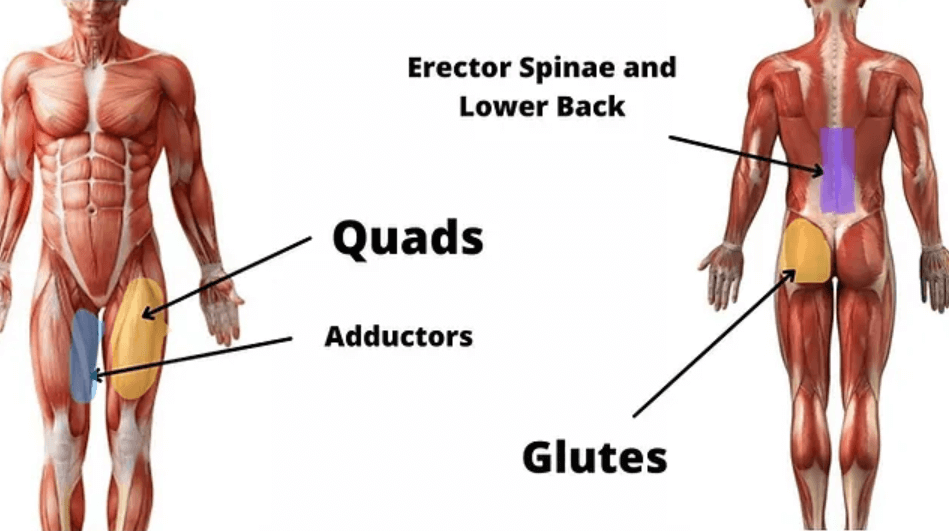
If you choose to go with the back squat, here are the muscles you'll be hitting the most;
- Glutes
- Quadriceps
- Spinal erectors
- Core
Benefits of Each Exercise
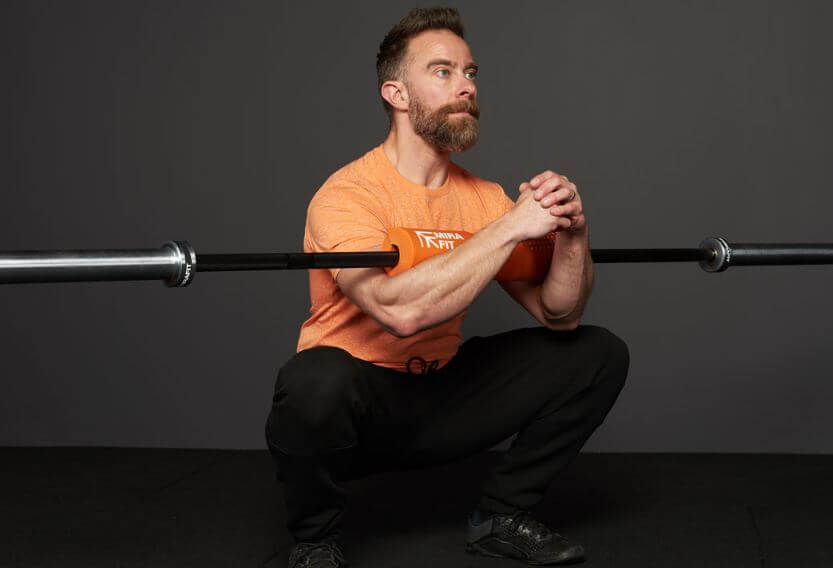
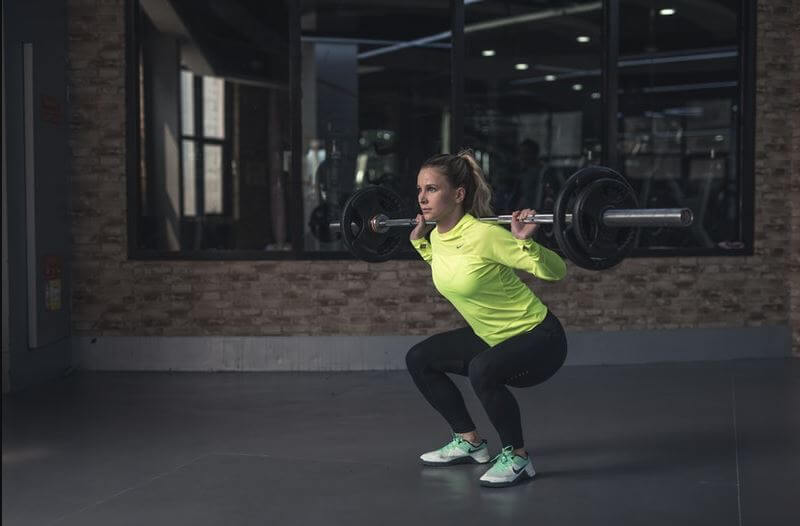
As I mentioned at the onset of this post, there are several benefits you stand to gain from each of these exercises.
Benefits of Zercher squats
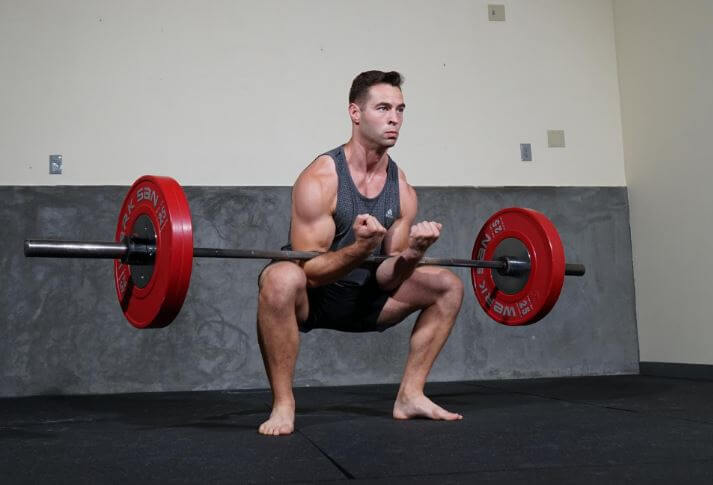
Performing Zercher squats provides you with several perks, making it an excellent every day full-body workout for enhancing muscle growth and fitness.
Increased upper back strength
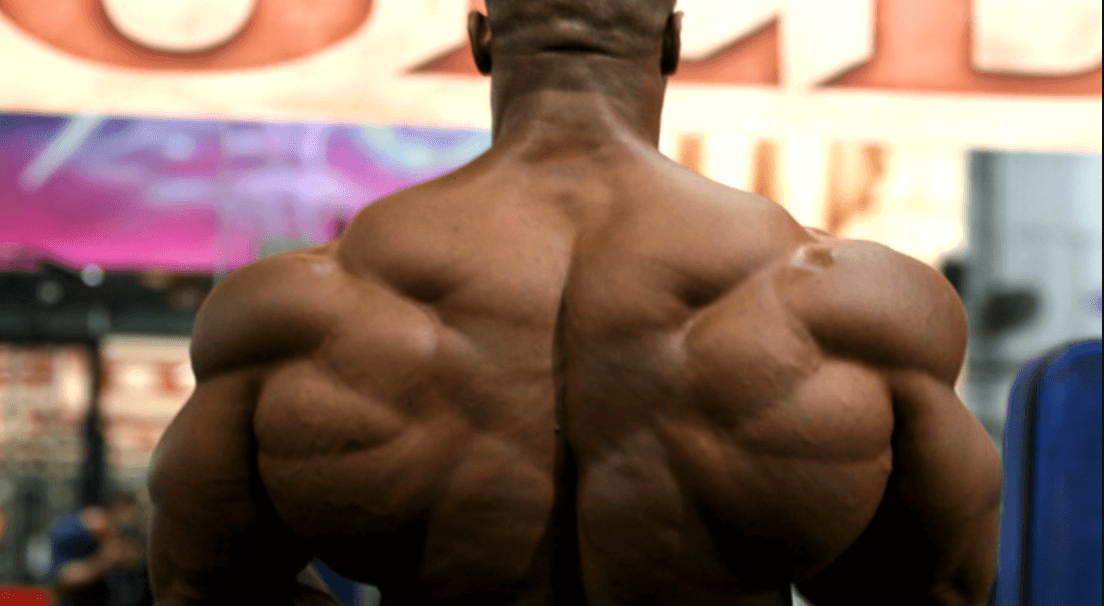
Thanks to the activation you get on your upper back and shoulder muscles, you can count on this workout if you are to achieve an incredible level of hypertrophy and strength in your upper back (or upper body in general).
Lower body strength
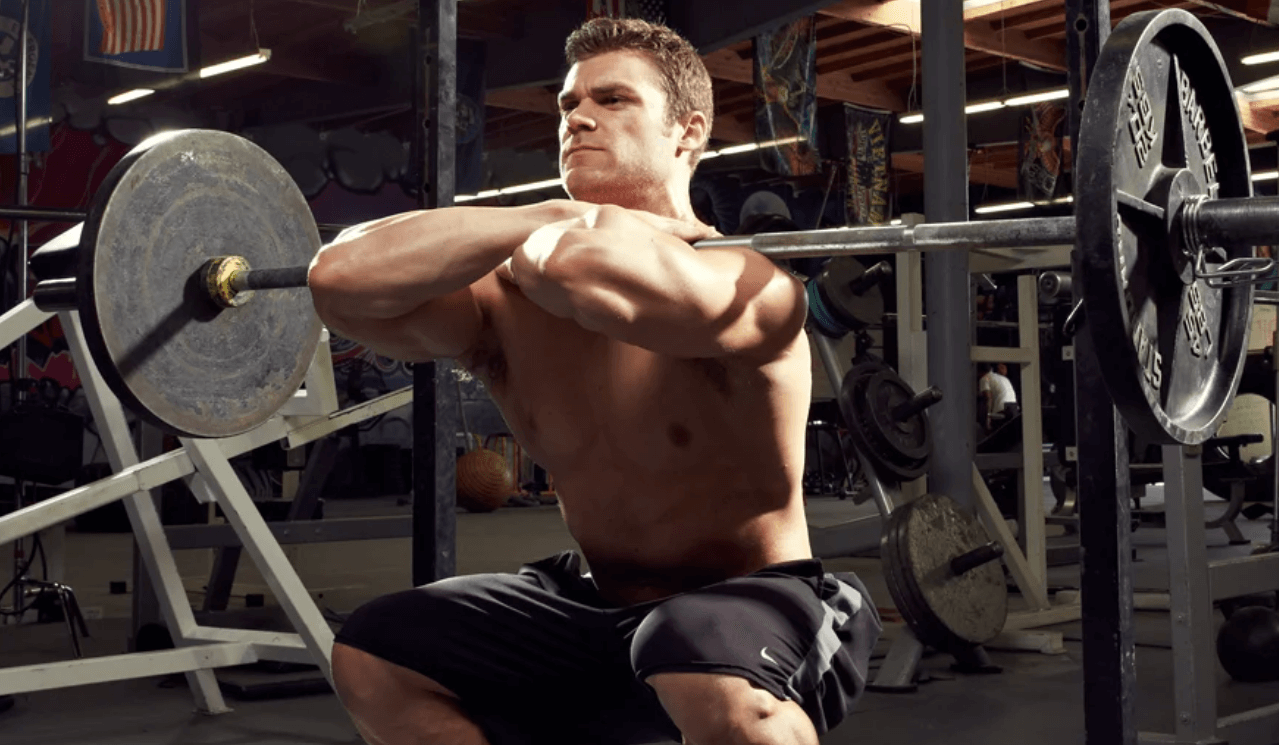
Thanks to the activation you get in your hamstrings, quads, and glutes, as well as the lower back muscles during the upward explosion, you get to build one heck of lower body strength. The unique positioning of the barbell in the crook of the elbows during a Zercher squat places extra emphasis on the glutes, making it an effective exercise for those looking to build a rounder booty.
This also helps with other workouts like Bulgarian split squat, shrimp squats, deadlifts and even for sports performances.
Improved core stability
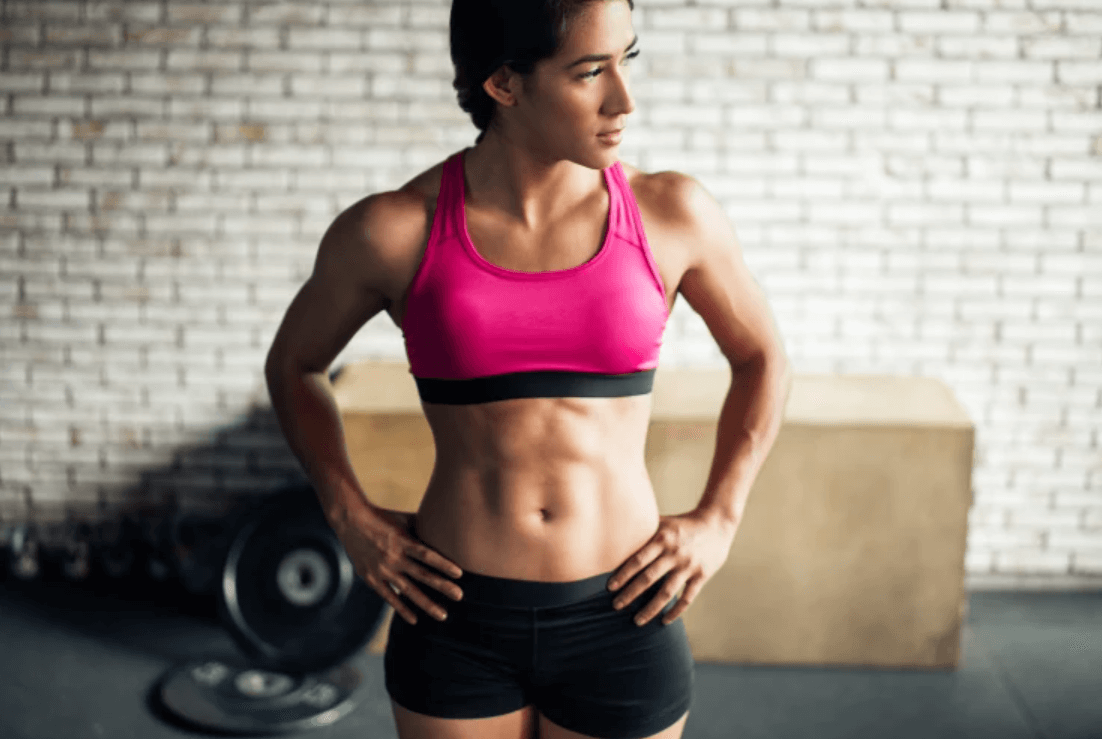
A strong, stable core comes in handy for more than just the looks, it makes all the difference when taking on grueling workouts like star planks, push-ups, squat and deadlift same day.
The Zercher squat not only activates your body’s anterior stabilizers throughout the move, it particularly hits the transverse abdominis, a crucial core area muscle.
Back Squat Benefits
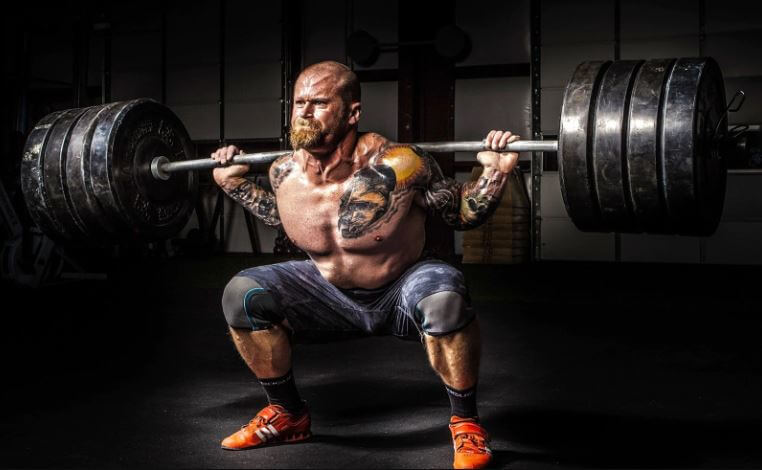
The back squat has a hoard of great benefits, but here are some that stand out the most.
Great leg strength

Yes, and size, too. The back squat gives the deadlift a run for its money when it comes to building massive, strong legs. And it’s all thanks to this workout’s ability to engage pretty much all the major leg muscles.
The fact that it allows you to lift more weight adds to the leverage you get with this squat variation. If you are a chicken-legged monstrous bodybuilder, this is one workout you should try.
Build on power

Having a herculean build with no power is no use – especially if you partake in sports that require lots of serious explosiveness. If done right (and consistently), the back squat can help stock up on your TNT levels.
A study by the British Journal of Sports Medicine has shown a correlation between squats and vertical jump, which requires a great deal of explosive power.
If you’re an athlete, then you’ll be thankful for the explosive power that this squat can add to your muscles.
Better movement
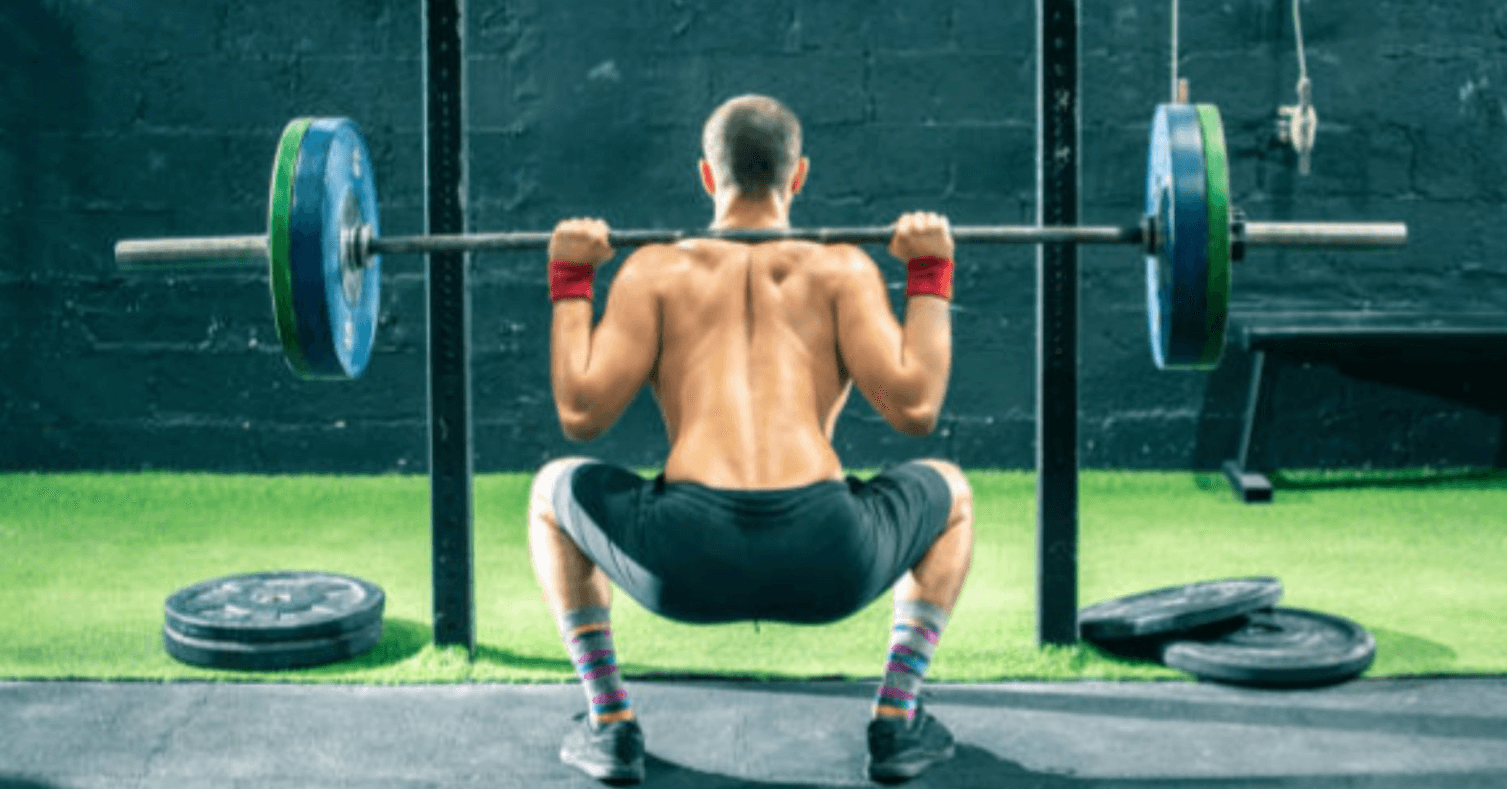
Regardless of whether or not you perform squats every workout, it's true that we all do squats as we go about our daily chores, whether it’s picking up a stack of boxes, or any other task that requires one to pick something from the ground.
The good thing about weighted squats is that they take all the muscles, joints, and tendons you use for an average squat and take the effect on them to a whole new level.
This means improved mobility in your hip, knee, and even ankle joints as well as other joints in your body. Developing your quads and hams also enhances the efficiency of such joints as the knee and hips respectively.
Are Zercher squats better than regular squats?
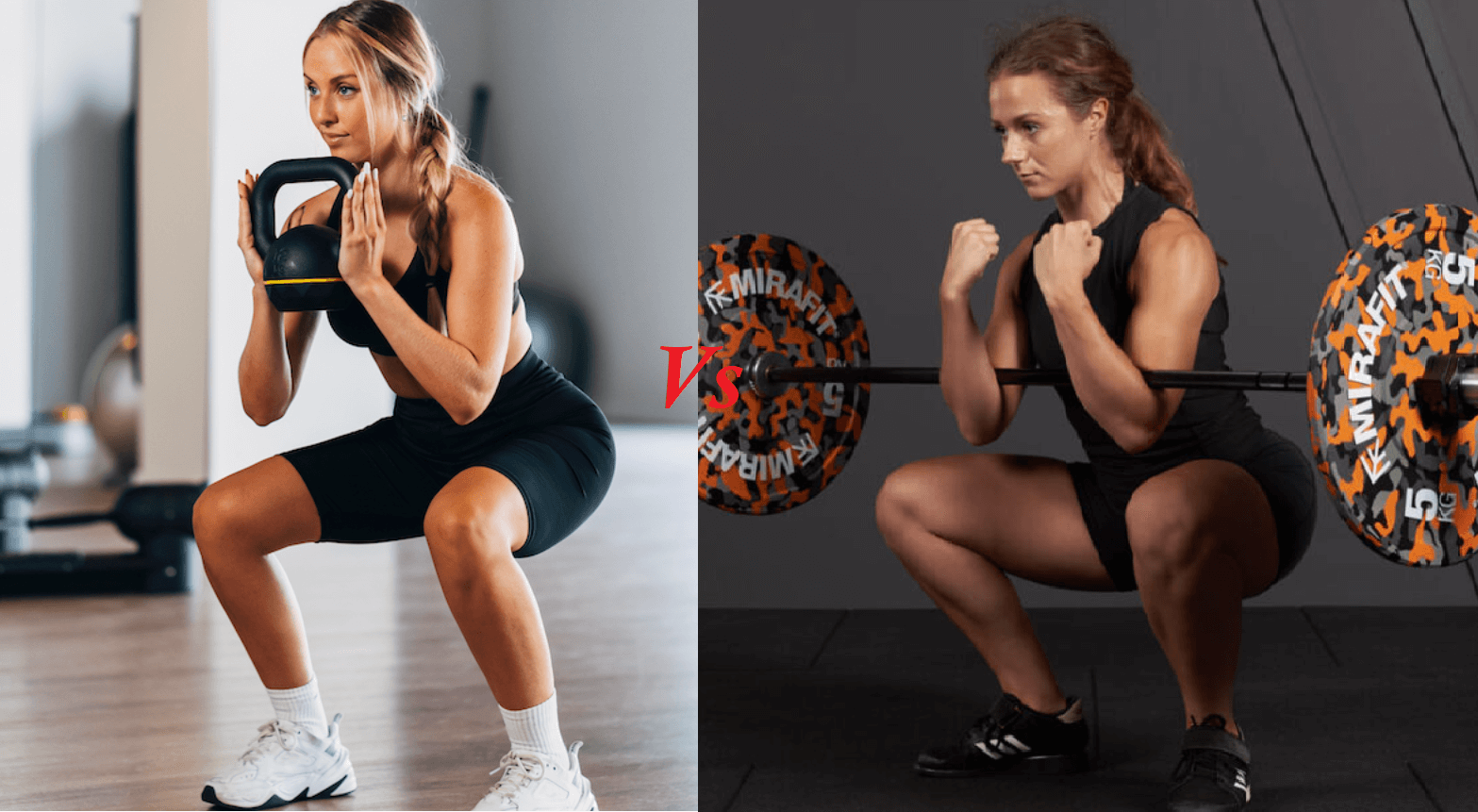
Well, it’s hard to say that any of these exercises is better than the other.
The best way to figure out which one works best for you would be to know the different muscles each one works, their benefits, and their differences.
Now that I have already shared the muscles worked and the benefits of each with you, it’s time to go over the differences to help you make the right choice.
And there’s only one significant difference.
It’s all in the position of the bar during the squat.
While the Zercher squat features a front-loaded bar position, the back squat, on the other hand, the weight is positioned on top of your back.
This difference in the weight positioning, therefore, changes the types of muscles engaged during the move. You can thus use this as the last factor to decide which of these two squats is better for your needs.
Otherwise, if you want to get the best of both worlds, you can also combine both squats for the best results.
Related articles:
Sumo squats vs Goblet Squats
Can You Grow Your Glutes with Resistance Bands
How Many Squats Should I Do in A Day to Tone Thighs
Shock the Muscle Myth
Resources;
- https://www.masterclass.com/articles/zercher-squat-guide
- https://boxlifemagazine.com/the-zercher-squat-the-most-underrated-squat/
- https://barbend.com/back-squat/
- https://www.healthline.com/health/fitness-exercise/front-squat-vs-back-squat
- https://www.boxrox.com/the-back-squat/
- https://www.boxrox.com/zercher-squat-muscles-worked-benefits-technique/
Ben Mayz
Hi there! I'm Ben, main author and chief editor at Fitlifefanatics.com. I have been obsessed with Strength Training and Fitness for 18 years now.
My passion for living a happy fit lifestyle is what made me realize that fitness is what I wanted for my future.
I went on to earn my Masters in Sports Training & Biomechanics.
My passion for Strength training & fitness and my love of helping others is what made me start Fitlifefanatics.
Here, myself, and a team of specialist aim to provide the most accurate, and actionable information possible in hopes to help foster the fitness community forward.
You can learn more about Fitlifefanatics on our About Page
